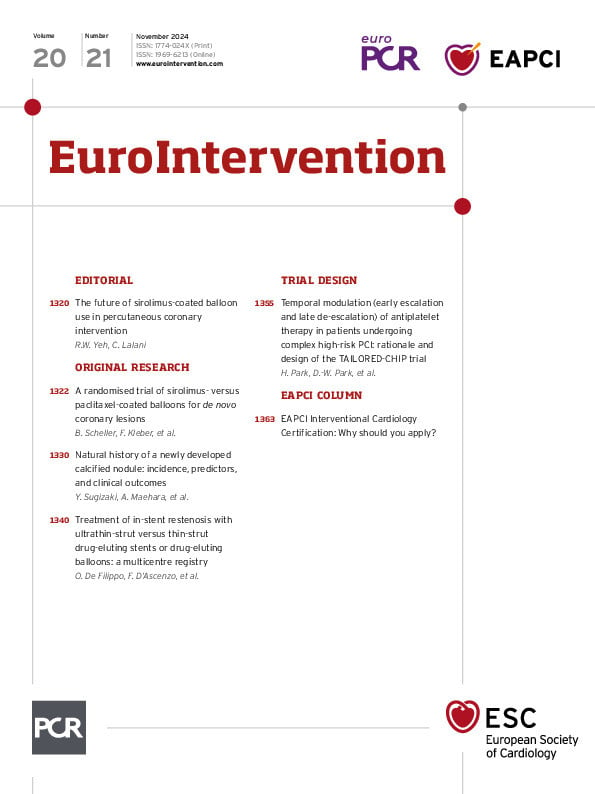Whether you’re looking for a comparison of drug-eluting balloons, choosing between a type of stent or balloon to treat DES in-stent restenosis, or just interested in the timing for antiplatelet therapy in high-risk PCIs, we’ve got you covered in this issue of EuroIntervention!
How does sirolimus compare as a valid alternative to paclitaxel in drug-coated balloons? That’s the subject of an article by Bruno Scheller, Franz Kleber and colleagues comparing a novel sirolimus-coated balloon to a clinically proven paclitaxel-coated balloon in patients with de novo coronary lesions. The sirolimus-coated balloon was seen to be non-inferior at six months to the paclitaxel-coated balloon concerning angiographic evidence of late lumen loss, with no difference in clinical events at 12 months between the two devices.
Yoichiro Sugizaki, Akiko Maehara and colleagues investigate the natural history of new calcified nodules attempting to identify how their emergence relates to underlying plaque characteristics. The authors used serial optical coherence tomography to find that the formation of new calcified nodules is associated with untreated lesions that have large amounts of calcium, calcium with signal attenuation, and greater hinge motion, and was associated with worse clinical outcomes.
Ovidio De Filippo, Fabrizio D’Ascenzo and colleagues explore the efficacy and safety of ultrathin-strut drug-eluting stents (DES) versus thin-strut DES or drug- eluting balloons (DEB) for treating in-stent restenosis in existing DES. They find that the ultrathin-strut DES may be associated with a lower target lesion revascularisation risk compared with thin-strut DES or DEB in diffuse DES restenosis and may yield comparable outcomes for focal DES in-stent restenosis as well.
Hanbit Park, Duk-Woo Park and colleagues present the design and rationale of the ongoing TAILORED-CHIP trial which is studying patients undergoing complex high-risk percutaneous coronary intervention (PCI). These patients were randomised to either a time-dependent tailored antithrombotic strategy with an early escalation and a late de-escalation, or to a conventional dual antiplatelet therapy (DAPT). The primary endpoint is a net benefit clinical endpoint.

